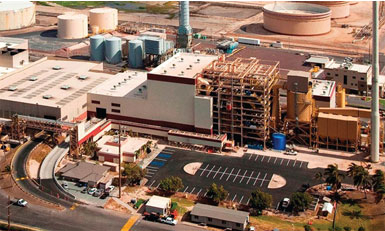In an innovative move, the EPA has come up with a new "penalty" for pollution – paying for a new, big solar system!
What a great idea.
In this case, the polluters are the City and County of Honolulu, which violated air pollution laws by not collecting and controlling emissions from a closed landfill that spans 215 acres.
They agreed to pay $16.1 million to build a 3.1 megawatt solar system at the city’s waste-to-energy plant on open space and on 250,000 square feet of buildings. They will also pay a penalty of $875,000.
Covanta’s H-Power plant would look a lot better with solar:
Decomposing landfill waste generates methane and hazardous air pollutants and under Clean Air Act, they must not be allowed to release into the atmosphere. A gas collection system has been operating since April 2013, but the deadline was 2002, when the previous system failed.
"If the proper systems had been in place at the landfill, over 343,000 tons of methane, and 6,800 tons of hazardous air pollutants and volatile organics would not have escaped to the atmosphere," says Jared Blumenfeld, EPA Administrator for the Pacific Southwest.
A toxic brew of hazardous gases have been released, such as benzene, chloroform, and vinyl chloride, many of which are known or suspected carcinogens. Methane is a potent greenhouse gas, which the US is trying to control.
"This settlement holds Honolulu accountable for past failures to collect and control toxic gases and greenhouse gas emissions from the Kapaa Landfill, but it also lays the foundation for better environmental stewardship in the future," says John Cruden, Assistant Attorney General for the Justice Department’s Environment and Natural Resources Division. "Residents who call Oahu home will realize the benefits of this agreement – which includes clean solar power production and reduced reliance on fossil fuels – for many years to come."
Hawaii Shoots For 100% Renewables
This month, Hawaii became the first state to pass legislation to adopt a 100% Renewable Portfolio Standard, which means utilities will source all electricity from renewable sources by 2045.
The legislation sets these milestones: 30% by the end of 2020, 70% by the end of 2040. It updates the current RPS – 15% by 2015 – which the state easily exceeded. Hawaii gets 21% of electricity from renewables and 12% of residential customers have on-site solar.
Hawaii ranks #9 in the US for solar capacity.
